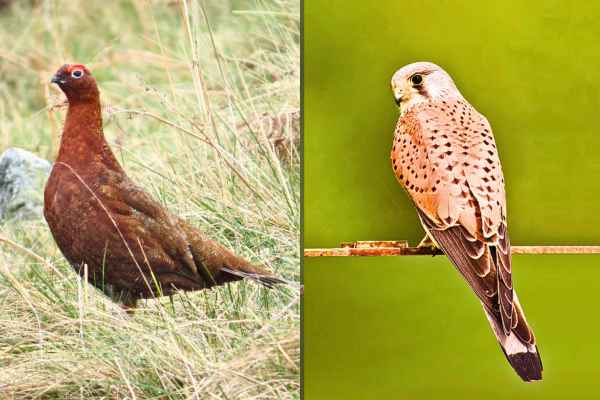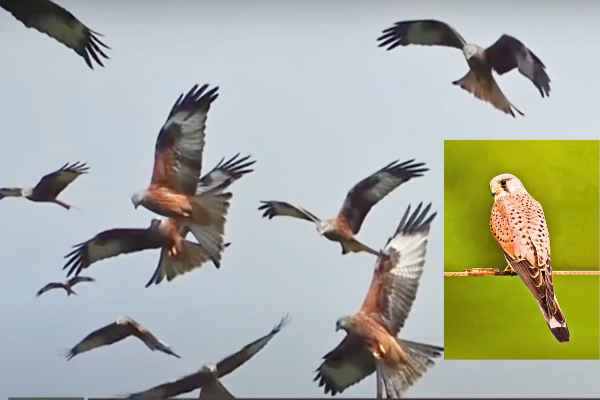The ongoing Bird Flu outbreak has been causing concern as it spreads to various bird species across different regions. Today we will explore the recent cases of bird flu, its impact on birds and humans, as well as the measures being taken to prevent further transmission.
– Kindly Share this post and news about the outbreak amongst your friends and relatives so that this news can alert them about the situation and hence make necessary changes in their poultry eating habits.
Dealing with the Bird Flu challenge we face now makes us think about the history of Highly Pathogenic Avian Influenza. It reminds us how long we’ve been fighting this tricky virus. Learning about this past and using what we know to prevent more problems helps us protect birds and people. The journey to stop Bird Flu shows our determination to take care of our world and each other.
The Confirmation of Current Inland Spread of Avian Flu
Current Confirmation of Avian Influenza in a bird of prey suggests that the virus is extending its reach to inland bird populations. The chief veterinary officer of the Isle of Man, Amy Beckett, highlights this concerning trend. A Kestrel found near the Point of Ayre tested positive for the virus, marking the first confirmed case on the island during this outbreak. This inland spread raises concerns for both wild and kept birds.
Variety of Species Affected
The recent positive case among Kestrels is significant, as it indicates a broader spectrum of species being affected by the virus. Previously, the virus was primarily detected in Seabirds, such as those in Port Erin and Port Peel. While cases have been reported in other regions as well, the spread to different bird types emphasizes the need for vigilance across various habitats.
Isle of Man’s Response and Ongoing Cases
The Isle of Man reports its third case of Bird Flu, involving a Kestrel near the Point of Ayre. While the virus has been found in wild birds, no restrictions have been imposed yet. The Department of Environment, Food and Agriculture emphasizes the importance of not handling sick or dead birds and calls for increased vigilance among bird keepers to prevent further transmission.

Image:By MPF – Own work, CC BY-SA 3.0, https://commons.wikimedia.org/w/index.php?curid=47878694
Image By Andreas Trepte, www.photo-natur.de, CC BY-SA 2.5, https://commons.wikimedia.org/w/index.php?curid=6542109
Impact on Island’s Kept Birds
The Chief Veterinary Officer, Amy Beckett, expresses concerns about the potential impact on kept birds, particularly free-range hens. These birds are at a significant risk if the virus continues to spread. Ms. Beckett suggests that bird owners take necessary precautions to protect their flocks. Practicing good biosecurity, avoiding contact with sick or dead birds, and maintaining hygiene are essential steps to prevent the virus from infiltrating poultry populations.
Bird Flu Update and Government Response
The Scottish Government has released a plan to address Bird Flu outbreaks. Gillian Martin, the environment minister, acknowledges the sad impact of the outbreak on wild bird populations globally. The plan aims to enhance our understanding of the outbreak and its mitigation strategies. While focusing on wild birds, the plan also recognizes the impact on kept birds and poultry, which have also been significantly affected by the virus.
Highly Pathogenic Avian Influenza in Red Grouse
DEFRA confirms a case of Highly Pathogenic Avian Influenza (HPAI) in Red Grouse in Scotland. This poses serious concerns, especially if the infected bird was found in an area managed for driven grouse shooting. HPAI spreads through nasal secretions, droppings, and bird predation. Given the rapid spread of diseases like Cryptosporidiosis in grouse populations, it is crucial to monitor and evaluate the extent of the outbreak.
Scottish Response and Multi-Agency Plan
Environment Minister Gillian Martin announces the Scottish Wild Bird Highly Pathogenic Avian Influenza Response Plan. This plan aims to monitor and mitigate the spread of the virus. The effectiveness of a multi-agency response is highlighted, involving various government agencies, organizations, charities, councils, and the public. The plan supports understanding the outbreak and minimizing its impact on both wild and kept bird populations.
Preventive Measures and Hygiene
To curb the spread of Avian Flu, several key preventive measures are recommended:
Biosecurity Practices: Maintaining stringent biosecurity measures is vital in controlling the transmission of the virus. This includes regularly cleaning and disinfecting equipment and facilities used for bird keeping.
Restricted Movement: In case of an outbreak, restricting the movement of birds and their products can help contain the virus. Implementing quarantine measures can play a pivotal role in preventing further spread.
Vaccination: Vaccinating poultry against Avian Influenza is a critical step. This can significantly reduce the chances of the virus spreading within bird populations.
Safe Handling and Cooking: Properly cooking poultry products and eggs is crucial to eliminate the virus. Avoid consuming undercooked or raw bird products.
Minimize Contact: Individuals living in affected areas should avoid contact with live poultry and wild birds. This reduces the risk of virus transmission to humans.
Global Response and Preparedness
The potential for Avian Influenza to evolve into a pandemic highlights the importance of global cooperation and preparedness. Governments, international organizations, and health agencies must work together to monitor outbreaks, share information, and develop strategies to prevent widespread transmission.
History of Highly Pathogenic Avian Influenza
Imagine going back to 1878 in Northern Italy. There was a problem: a Contagious Respiratory disease spreading among Chickens and Ducks. A lot were dying. People thought “fowl cholera,” a dangerous respiratory illness, was behind it. But Scientists in the 1900s figured out it was a tiny virus that caused it. This virus was called Highly Pathogenic Avian Influenza (HPAI) in 1981.
HPAI Through the Years
Going ahead, HPAI traveled around the world. In the 1920s, some places had outbreaks, even in the United States. From 1959 to 1995, HPAI popped up 15 times in different countries. The virus causing it was influenza A. But what’s interesting is that the types of this virus were H5 and H7 groups. (Note: Influenza A viruses have these groups based on parts on their surface.)
What’s cool is that until 1996, the United Kingdom had a harder time with HPAI compared to Asia, where only one outbreak happened.
A Big Change in 1996
Things shifted in 1996. A new kind of HPAI called H5N1 started in China. Ducks that flew around brought it to other birds. More than 4 out of 10 aquatic birds died from it. Some HPAI and low pathogenic Avian Influenza strains mixed up, creating a powerful strain that hit Hong Kong hard. They had to kill all the birds, and even people got sick and some died. This was the first time HPAI made people so sick.
Quiet Time and a Comeback: 1997 to 2003
After the Hong Kong trouble in 1997, there was a bit of calm. But in 2003, two people came back from China and had HPAI H5N1. After that, from 2003 to 2018, over 16 countries had people with HPAI. A lot of people got really sick and even passed away.
Conclusion
The ongoing bird Flu outbreak poses a significant threat to bird populations and raises concerns about potential human transmission. The spread to various bird species, including inland birds, underscores the need for strict preventive measures and global cooperation. By adhering to hygiene practices, practicing biosecurity, and following guidelines, we can contribute to curbing the spread of Avian Flu and protecting both wild and kept birds.




